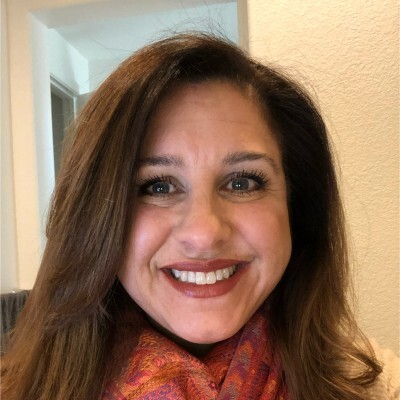Shawnna Sumaoang: Hi, welcome to the Sales Enablement PRO podcast. I am Shawnna Sumaoang. Sales enablement is a constantly evolving space and we’re here to help professionals stay up to date on the latest trends and best practices so that they can be more effective in their jobs. Today I’m excited to have Tisha Garza from Grafana Labs join us. Tisha, I would love for you to introduce yourself, your role, and your organization to our audience.
Tisha Garza: Hi, so my name is Tisha Garza and I run global go-to-market enablement for Grafana Labs. So, I have been running sales enablement for quite a long time. Right now, I am head of sales enablement, but I am what I consider a strategic tactical leader. So, I come into a lot of startups and I have a strategic lens on how we’re going to build out the enablement function, but I’m also tactical in the sense that I began building some of those programs until I’m able to start hiring and scaling the organization, as the sales team and the go-to-market team build out.
SS: Fantastic. I’m so excited to have you with us today. In your current role, you create training programs for your sales reps that focus on developing soft skills. So, I’d love to hear from you, what soft skills do sales reps need to be successful in sales, particularly in today’s environment?
TG: So, I think there are two that go hand in hand and it’s around discovery. Also, the skill of listening. When I think about the art of asking good questions, that a lot of times it’s the listening skills that become really key because that helps to drive where the conversation goes. A big part of discovery is being able to ask the right questions, but then also get to the deeper level of pain that you’re trying to identify. And the art of listening will give you those cues so that you know where to take the conversation and how to ask those second and third-layer discovery questions.
SS: I love that. I think listening is a great one. What are some specific training strategies that you use to help reps strengthen soft skills like that?
TG: It’s mostly focused right now on the onboarding. And so, during onboarding, we make sure that we’re doing role-plays and giving, especially new hires, the opportunity to practice that skill. But there’s also another element that we’re working on is trying to identify the questions to ask. And so, I think that it’s very common for a company to come up with a list of questions, but I like to also include, why are you asking these questions? I think it becomes really important for the rep to understand, not just these are the questions you’re asking, but these are the reasons why you’re asking those questions and how that can lead you to listening to certain cues. And then you can kind of take it from there and have a bit of a flow chart in place so that they understand that there are some general discovery questions, but then as you’re going through those discovery questions, how do you then identify key sales plays, and then you can lead the conversation down into those key sales plays. So that’s one part.
Another part is we record all those conversations that are going on. And so, we’ve identified some key discovery that we want the reps to listen to. And so, they get an opportunity to shadow. Shadowing before has always been really challenging and difficult because you don’t really know where the conversation’s going to go. A rep could be coming on and shadowing a call, but not get a lot of benefit out of it. But by having these recorded calls, we capture that, and we capture the good ones and then we’re able to share those. And then finally, as a last step of their onboarding, we have them submit their own calls, whether they’re good or whether they’re not so good and they need some coaching and feedback. So, I think that there’s kind of a full loop here to give them the opportunity to listen to other calls, but then also record and submit almost like a certification for their top halls. But then if they’re getting stuck or particular objection is not, and they’re not, they don’t know how to answer it that they can then submit that, and we can help give them the coaching that they need to get really good at getting at that skill.
SS: Fantastic. And now, on that point to segue a little bit into that, when you’re targeting a split skill or competency in your trainings, what are some of the metrics that you’re using maybe before and after the session to evaluate the rep’s effectiveness in that particular skill or program?
TG: Yeah. So right now, I’m so new here at Grafana, but one of the things that we’re trying to do is benchmark a little bit to figure out conversion rates, number one within the stage. So how quickly are they able to convert a discovery call into the next stage? So that’s one part of it. And then the other part of it is the length of time that it takes them to actually convert that. So, I think that there’s two. What’s the rate that you’re converting, but then how long is it taking you to actually convert that?
I think it becomes really important to look at those two things and that’s from an onboarding, but also an ongoing standpoint. And so, we’re really establishing right now what are some of those benchmarks and then where do we want it to be? And then how can enablement help support and get it moving in that direction because it’s not going to happen overnight, but how can we start showing progress and improvement?
SS: Absolutely. Obviously, frontline managers are critical too. I think that latter part that you were talking about when it comes to training. So, knowing that you’re relatively new in this role, just in your experience, maybe even past experience, how have you partnered with frontline managers to help monitor and reinforce behavior change among the reps that you support?
TG: I think that this partnership is critical. So, the alignment between me and the frontline managers is such a critical element to the overall success, not just for me, but also for the sales team. So, I work very closely with them. They’re always aware of the things that I’m working on so that I make sure that I’m prioritizing things, along with them, but also that the ongoing adoption and coaching happens from them. So, I want to make sure that we’re aligned. I listened to their coaching calls, so I make sure that as I’m coaching reps it aligns with the way that they’re coaching reps.
And then just having that constant communication. I have a separate Slack channel with them. I have separate calls with them. I have individual calls with them. I join all their team meetings and I also provide them with feedback, my observations, things that I think that they did really well, things that I think were maybe some gaps that they might want to consider moving forward. So, I think that that relationship between me and the frontline manager is one of the most critical. And so, I like to establish that early and often.
SS: That’s fantastic. Now, a lot of training programs are now being done completely virtual, given the environment that we’re in. I’d love to hear from you some techniques that you found most impactful for supporting, learning, and retention in a more digital environment. How does that differ from sort of more in-person formats?
TG: Yeah. The days of week-long boot camps are over at this point. So not doing those five-day boot camps that start at 8:00 AM and go until 5:00 PM. And then we have happy hour and dinners and team building, all of those types of things. Those are not a part of our world today, who knows if they will be in the future, but for now we’re doing everything virtual, we’re making our sessions shorter. So they’re not as long as they used to be. We’re not going all day. We’re maybe going a few hours a day. We’re being very targeted and very focused on what we’re covering.
One of the things that I try to do that I think is really important nowadays is to send content or FAQ’s ahead of time to help educate people before they jump on the virtual session. What I have found is that makes the session more interactive because they have an opportunity to read through some of the material. And when they join on the call, it becomes more interactive. You know, repetition is key. And so, if we send them stuff ahead of time, and then we jump on a call and we talk through it, I just find that when we’re able to do that. It doesn’t always turn out that way, but when we’re able to do that, those sessions go over so much better because they’ve had an opportunity to read through it, absorb some of it, come prepared with questions and it just becomes a more interactive session.
I mean, it’s a lot more preparation than anything. You can get that interactivity in person. But I know in a virtual space, you have to do a lot more preparation to get content in their hands ahead of time to create that interactivity. And then, you know, evaluate where people are at in their own retention.
SS: In addition to the training programs that now need to be delivered virtually, I imagine a lot of the post-training needs to happen a little bit differently as well. So, I’d love to understand what are you doing kind of post-training to ensure that retention occurs? You mentioned repetition, I’d love to understand what you guys are doing there.
TG: Yeah. I like to go at it in multiple layers if you think about it, right. Every frontline manager has a team call. And then we have regional calls and then we have global calls. And so, try to hit them at all of those different levels. And because when they’re on a team call, you get a lot of joking around. People are a lot more relaxed. And then as the crowd gets bigger and broader, people get more quiet people, tend to multitask and things like that. But when you’re on a team call, you really get the essence of their attention and what needs to be covered.
What I’ve found is that I try to hit them on multiple levels. So that’s one way. And then another way is that we’ve seen up opportunities for them to ask questions. If we’re using, let’s say Slack. So, we have Slack groups. If we’re rolling something out, maybe a new product, things like that, they get the opportunity to ask questions and we can provide them with updates on a regular basis.
SS: Fantastic. Now, to close out this conversation, this time of year a lot of sales enablement practitioners are really busy planning for sales kickoff. So, I’d love to learn from you and your experience on that front. How are you approaching your sales kickoff this year in light of all the changes and uncertainty that we’ve been basing this past year?
TG: Yeah, so it’s a lot more preparation than what anybody could imagine. I’ve been through a lot of sales kickoffs, and I kind of have my playbook for running a sales kickoff, but now what’s happened is you have to rewrite your playbook. You have to rethink, how are you going to create. You have the issue of time zones. How are you going to be able to create some of those things that you were able to get in person? Considering that we’re not all in the same place, on the same time zone. We’re now in multiple time zones. It’s the middle of the night in Australia when we’re having lunch here in California, so keeping all of those things in mind, how it’s really about how do you create a sales kickoff that is going to engage the global audience, considering the time zones.
But also, it’s not going to be two days, right. It’s going to be more like four or five days, and we’re going to go for maybe four or five hours. And we’re going to have a lot of breaks. We’re going to have a lot of games and activities, and it’s just going to be much more planning and preparation than “Hey, let’s call an audible,” in an in-person kickoff when you can just call an audible and say, we’re going to change this up a little bit. We don’t have that luxury. We have to be really tight on our execution. Our timing has to be spot on and we just always have to have the consideration of the different time zones. So, it’s going to be just a different world.
SS: It absolutely is Tisha. Thank you so much for joining us today. I enjoyed this conversation.
TG: Thank you so much. I appreciate it.
SS: To our audience, thanks for listening. For more insights, tips and expertise from sales enablement leaders, visit salesenablement.pro. If there’s something you’d like to share or a topic you’d like to learn more about, please let us know. We’d love to hear from you.







